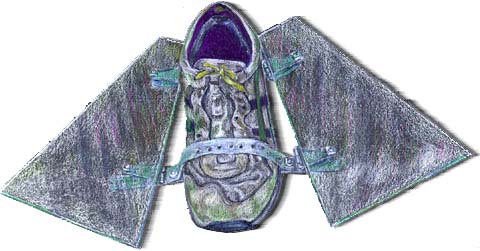AN
UNCONVENTIONAL GENETICIST EXPLORES HOW FRUIT FLY EMBRYOS FIX MISTAKES
TO DEVELOP PROPERLY.
ON
THE WALL above Bill Sullivan's file cabinet hangs a winged tennis
shoe. Trapezoid-shaped Plexiglas panels splay out from the side of
the shoe, attached with metal hinges. Sullivan invented this contraption
to help him negotiate a trail in Big Sur that meanders back and forth
across a river. It's hard to swim wearing tennis shoes, he says, and
he didn't want to take them off and put them on every ten minutes.
The panels fold up for walking and down when he needs flippers.
Sullivan's knack for solving problems many people
never even ponder gives him a unique approach to scientific puzzles.
His radically fresh perspective has led him to challenge and overturn
some widely held assumptions in his field.
Sullivan has applied this approach to ask how a
fruit fly develops from a fertilized egg into the complex insect that
makes a nuisance of itself in fruit bowls on hot summer days. In particular,
Sullivan is asking how the fly's embryo grows at seemingly reckless
speeds during the early stages of its development, and yet manage
to produce an animal with exactly four wings, six legs, and two eyes,
all of which function properly.
The flies use unexpected methods to assure quality
control during their initial growth period, Sullivan has found. These
include techniques that organisms such as humans use later in life
to protect themselves from cancer. His findings have opened up a new
avenue for studying how cells normally behave as good citizens in
the bodies of a wide variety of animals.



